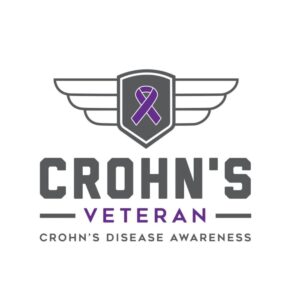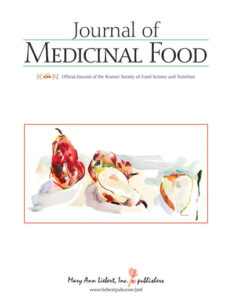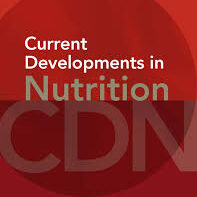Lactose Intolerance: What It Means for People with IBD
Danielle Gaffen, MS, RDN, LD
- Last Updated
My husband with Crohn’s disease is really lactose intolerant. Interestingly, the incidence of lactose intolerance is no greater in patients with inflammatory bowel disease (IBD) than in the general population. However, during a flare, excessive intake of lactose may contribute to abdominal cramping, gas, and diarrhea!
Many of my clients have questions about lactose, IBD, and nutrition, so please find the answers to your burning lactose questions below!
Please note: People with IBD who can tolerate lactose should not restrict lactose-containing foods because they can be a valuable source of high-quality protein, calcium, and vitamin D!
What is Lactose and What is Lactose Intolerance?
Lactose is the sugar found in milk and dairy foods (about 5% of fluid milk is lactose). The lactose sugar, which is a type of carbohydrate, is complex in structure. To digest lactose properly, people need to have a specific enzyme in the small intestine. This enzyme is called lactase.
If you have trouble digesting lactose (lactose intolerance), you may have diarrhea, bloating, stomach pain, and gas symptoms 30-90 minutes after consuming milk, ice cream, or large amounts of dairy.
Interestingly, a genetic mutation favoring the ability to tolerate lactose arose approximately 10,000 years ago, when dairying was first introduced. This genetic mutation appears to have occurred primarily among people of European, Indian, African, and Mongolian ancestry. Furthermore, the populations with the greatest ability to tolerate lactose appears to be Sweden and Denmark, with a whopping 97% of people reportedly able to tolerate dairy products.
Lactose intolerance is the most common type of food intolerance, affecting 90% of the world’s population. It also affects at least 30-50 million Americans, especially certain ethnic groups (Asian Americans, Native Americans, African Americans, and Hispanics). Most cases result from a genetically influenced reduction of the lactase enzyme produced in the intestines. Secondary lactose intolerance can develop as a consequence of infection of the small intestine, inflammatory disorders, or malnutrition. In children it is typically secondary to viral or bacterial infections. Lactose malabsorption commonly is associated with other GI disorders, like IBD.
Is Lactose Intolerance a Food Allergy?
Food intolerances (like lactose intolerance) are adverse reactions to food that result in clinical symptoms but are not caused by an immune system reaction, (like a food allergy is). Food intolerances are much more common than food allergies and are usually triggered by small-molecular weight chemical substances and biologically active components of food [1]. Symptoms caused by food intolerances are often similar to a food allergy and include GI symptoms, respiratory symptoms, headaches, etc. Clinically, it is important to distinguish food intolerance from immune-mediated food allergy, because food allergies can cause life-threatening anaphylactic reactions, whereas food intolerances do not.
What Causes Lactose Intolerance?
High concentrations of lactase are present in the small bowel of all newborn mammals. After weaning, about 75% of the world’s population dramatically decreases the synthesis of this enzyme, despite continued exposure to lactose [2]. The majority of adults of Asian, African, Latino, and Native American descent experience this decrease in production of lactase enzyme, whereas Caucasians tend to continue to produce the lactase enzyme.
Lactose intolerance has been reported to be low in children younger than age six, but increases throughout childhood, peaking at age 10-16 years.
Little evidence indicates that lactose intolerance increases with increasing adult age [3]. However, even in adults who retain a high level of lactase levels (75-85% of white adults of Western European heritage), the quantity of lactase is approximately half of that of other enzymes our bodies need to digest other foods.
Signs, Symptoms, and Side Effects of Lactose Intolerance
When large amounts of lactose are consumed, especially by people who have little remaining lactase enzyme or with concurrent GI problems, loose stools or diarrhea can occur (along with accompanying bloating, gas, and cramps).
Malabsorption of lactose is generally due to the deficiency of lactase, as mentioned above, the enzyme that digests the sugar in milk. This means that lactose cannot be digested properly as it passes through the upper small intestine and ends up passing into the colon, undigested! In the colon, the undigested lactose is fermented by bacteria in the gut, which will create hydrogen gas, carbon dioxide, and short chain fatty acids. This fermentation of the undigested lactose is what will cause lactose intolerance symptoms!
Tests for Lactose Intolerance
There are two tests you can get to confirm suspicions of lactose intolerance: an abnormal hydrogen breath test or an abnormal lactose tolerance test.
Hydrogen Breath Test for Lactose
During a hydrogen breath test, a person is given a standard dose of lactose after fasting, and breath hydrogen is measured. If lactose is not digested in the small intestine, it passes into the colon, where it is fermented by the gut microbiota to short chain fatty acids, carbon dioxide, and hydrogen gas. Hydrogen is absorbed into the bloodstream and is exhaled through the lungs.
Therefore, breath hydrogen is measured fasting, and at 30 minutes and 2 hours after consuming lactose. If there is a significant increase in hydrogen gas, that is associated with malabsorption of lactose, and therefore demonstrates lactose intolerance!
Please note: bacterial overgrowth can cause false-positive results. Other potential causes of false-positive test results include consumption of soluble fiber or legumes, and smoking, which are associated with hydrogen gas production. Alternatively, false-negative results can be caused by antibiotics.
Lactose Tolerance Test
During a lactose tolerance test, a dose of lactose is given to a person to consume. If the individual has sufficient lactase enzyme, blood sugar rises, reflecting the digestion of lactose. If the individual is lactose intolerant, blood sugar will not rise because the lactose is not absorbed; it passes into the colon and GI symptoms may appear. The lactose tolerance test was based originally on an oral dose of lactose equivalent to the amount in 1 quart of milk (50 grams). Recently, doses lower than 50 grams of lactose have been used to approximate more closely the usual consumption of lactose from milk products.
In this test, lactose loading (50 grams) is followed by blood sampling at 5 minutes, 10 minutes, 30 minutes, 60 minutes, 90 minutes, and 120 minutes after the dose of lactose. Lactase deficiency could be diagnosed if the serum glucose does not rise above 20 mg/dL, because it means the body is not digesting the lactose.
Please note: this test is not specific, so is likely to cause a lot of false positives, where people are diagnosed as being low in lactase, and hence they have lactose in cause a lot of false positives, where people are diagnosed as being low in lactase, and hence they have lactose intolerance, when they really do not. It’s also not sensitive, so it’s likely to cause a lot of false negatives, where the test says there must be plenty of lactase, and the person is therefore not lactose intolerant, which in fact they are! Due to this, I’d recommend the Hydrogen Breath Test over the Lactose Tolerance Test!
Medical Nutrition Therapy for Lactose Intolerance
Management of lactose intolerance requires dietary change.
If an adult is lactose intolerant, a completely lactose-free diet is not necessarily a must. Most lactose intolerant people can consume some lactose without major symptoms, especially when taken with meals or in the form of aged cheeses or fermented dairy products like yogurt. This is because in some cheeses, yogurt, and other fermented dairy products, bacteria break down the lactose for before it gets to our guts!
Limiting or avoiding milk and dairy products can help ease these symptoms. Most lactose intolerant people can consume some lactose (up to 12 grams per day) without major symptoms, especially when taken with meals or in the form of cheeses or fermented dairy products [4].
People who avoid dairy products may need calcium and vitamin D supplementation or must be careful to get nondairy sources of these nutrients. But remember, a completely lactose-free diet may not be necessary in most lactose intolerant people.
On a different note, many adults with intolerance to moderate amounts of milk can ultimately adapt to and tolerate 12 or more grams of lactose (equivalent to one cup of full-lactose milk) when introduced gradually, in increments, over several weeks. Incremental or continuous exposure to increasing quantities of lactose can lead to improved tolerance and less diarrhea. It’s hypothesized that this phenomenon is not because of increased lactase enzyme production, but rather by the alteration of the make-up of the gut’s microbiome.
Pills for Lactose Intolerance
Certain products are now widely available for people who cannot tolerate dairy products. For example, over-the-counter lactase enzyme tablets (also known as “dairy pills”) may be beneficial with a dairy-containing meal.
The enzyme found in these supplement tablets are natural lactase enzymes like those found in our guts that break down the milk sugar (lactose) to help reduce discomfort (gas, bloating, and diarrhea associated with not being able to break down the lactose).
My husband with Crohn’s is totally lactose intolerant, and while he appreciates that these lactase enzyme tablets aren’t a perfect fix, they can help his symptoms greatly when he’s in a pinch and chooses to eat a food with some dairy in it. While most pharmacies and grocery stores sell lactase, we have found the most cost-effective option at Costco! The Kirkland generic of lactase enzyme goes for only about a penny for each tablet
Additionally, certain dairy products, such as Lactaid Brand products, have been treated with the lactase enzyme already, so that most of its lactose is broken down. This results in a slightly sweeter flavor, and results in a milk more easily digested by people who have some degree of lactose intolerance.
Lactose Content of Common Dairy Foods, in Grams (g)
Here’s a comparison of the amount of lactose found in some common dairy foods, listed from highest to lowest.
| Food | Serving Size & Lactose Amount (g) |
|---|---|
| Nonfat Dry Milk Powder (un-reconstituted) | 1 cup = 62 g |
| Sweetened Condensed Milk, Undiluted | 1 cup = 40 g |
| Evaporated Milk | 1 cup = 24 g |
| Milk (nonfat, 1%, 2%, whole), Chocolate Milk, Acidophilis Milk, Buttermilk | 1 cup = 10-12 g |
| Chocolate Milk, Reduced Fat with Added Calcium | 1cup = 9.6 g |
| Ice Cream | 1/2 cup = 6 g |
| Half-and-Half | 1/2 cup = 5 g |
| Yogurt, Cultured, Low-Fat | 1 cup = 5-10 g (note: although yogurt does contain lactose, cultured yogurt is generally well tolerated by those with lactose intolerance) |
| Kefir, Plain, Low-Fat | 1/2 cup = 4.5 g |
| Cream (Heavy), Whipped | 1/2 cup = 3-4 g |
| Cottage Cheese, Low-Fat, 2% Milkfat | ½ cup = 2-3 g |
| Yogurt, Greek, plain, nonfat | 170 grams = 4.32 g |
| Sour Cream | 1/2 cup = 4 g |
| Sherbet, Orange | 1/2 cup = 2 g |
| American Cheese, Processed, Pasteurized | 1 slice = 1.2 g |
| Cream cheese | 1 ounce = 1 g |
| Cheddar Cheese, Sharp | 1 ounce = 0.05 g |
| Aged Swiss Cheese | 1 ounce = 0.02 g |
| Butter, margarine | 1 teaspoon = trace amounts |
Low Lactose Dairy Foods
Some people with lactose intolerance can safely eat dairy foods that contain a little lactose (less than 1 gram lactose per serving). You may wish to try:
· 1-2 ounces aged cheese, such as Swiss, cheddar, or parmesan
· 2 tablespoons cream cheese
· ½ cup ricotta cheese
Generally, hard cheeses aged over 30 days will have low lactose when compared with soft, fresh cheeses!
Hidden Sources of Lactose
Please note: If you’re trying to avoid lactose, it is critical to read food labels! I recommend doing so because you may find ingredients containing lactose in the seemingly strangest foods….including but not limited to: lunchmeats, hot dogs, baked goods, instant potatoes, instant soups, beverage mixes, margarine, salad dressings, candies, pancake and cake mixes.
Lactose-Free Dairy Options
Several lactose-free dairy products are available that may make it easy for people to meet their calcium and various other nutrient needs; these include:
o Lactaid, Horizon Organic, and Dairy Ease lactose-free milks, in which the lactose is “predigested” (hydrolyzed).
o Lactaid also makes lactose-free ice cream, yogurt, cottage cheese, and eggnog.
o Yoplait makes a lactose-free yogurt.
These products typically contain between 0 g to 2 g of lactose per serving, well under the typical threshold for symptoms. Some products also claim to be lactose-free, when they’re virtually lactose-free to begin with, such as lactose-free cream cheese (regular cream cheese contains less than 1 g of lactose per oz).
Getting Enough Calcium If Lactose Intolerant
Calcium is the most abundant mineral in the body. 99% of our body’s calcium supply is stored in the bones and teeth, where it supports our body’s structure and function.
1% of our body’s calcium is in our blood serum, and it supports critical metabolic functions in our body like muscle function, blood vessel contraction and dilation, nerve transmission, and cell signaling. If we don’t have enough calcium in our blood serum, then our body takes more calcium from the reserves in our bones, which leads to osteopenia and osteoporosis.
Additionally, if on corticosteroids, people with IBD may be more at risk for bone loss. Therefore, calcium becomes even more important!
How Much Calcium Do You Need?
The recommended levels are set to meet the needs of the greater majority of the population.
Here are the current recommended average daily intake levels that are sufficient to meet the requirements of nearly all healthy individuals (Recommended Dietary Allowance) for calcium:
· Males 19-50 years: 1000 mg
· Females 19-50 years 1000 mg
· Males 51-70 years: 1000 mg
· Females 51-70 years: 1200 mg
There are many dietary sources of calcium, but low-fat milk or yogurt or fortified substitutes are the most efficient and readily available. Lactose-free milk and soy, nut, rice, and other grain milks fortified with calcium and vitamin D are now available. They are usually fortified to 300 mg calcium per cup, equivalent to the amount of calcium in cow’s or goat’s milk, but the nutrition label should be checked.
Non-Dairy Sources of Calcium
Note: Milk and dairy foods are a primary source of calcium, a mineral that is important to good health. When you avoid milk and dairy foods, you need to get calcium from other foods, such as the following:
· Sardines
· Canned salmon
· Tofu (calcium-fortified)
· Shellfish
· Turnip greens
· Collards
· Kale
· Dried beans
· Broccoli
· Calcium-fortified orange juice
· Calcium-fortified soy milk
· Blackstrap molasses
· Almonds
Looking for the calcium content of common plant-based foods? Check out this new resource:
Plant-Based High-Calcium Foods
Feeling confused on what to eat to manage your IBD symptoms? Has this led to a limited diet, weight loss, and/or fatigue?
I help my clients implement a highly personalized nutrition plan that brings clarity around which foods to add that may be beneficial, reduces fear and anxiety around eating, reduces inflammation, and ultimately helps them to get their lives back.
References:
1. Carlson JA, Kolasa KM. The Health Professional’s Guide to Food Allergies and Intolerances. Journal of Nutrition Education and Behavior. 2013;45(6):806.e5. doi:10.1016/j.jneb.2013.06.006
2. Levitt M, Wilt T, Shaukat A. Clinical Implications of Lactose Malabsorption Versus Lactose Intolerance. Journal of Clinical Gastroenterology. 2013;47(6):471-480. doi:10.1097/MCG.0b013e3182889f0f
3. Suchy FJ, Brannon PM, Carpenter TO, et al. National Institutes of Health Consensus Development Conference: lactose intolerance and health. Ann Intern Med. 2010;152(12):792-796. doi:10.7326/0003-4819-152-12-201006150-00248
4. Misselwitz B, Pohl D, Frühauf H, Fried M, Vavricka SR, Fox M. Lactose malabsorption and intolerance: pathogenesis, diagnosis and treatment. United European Gastroenterol J. 2013;1(3):151-159. doi:10.1177/2050640613484463











































